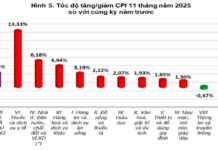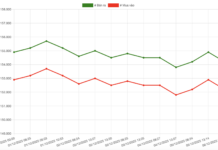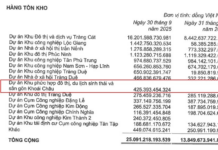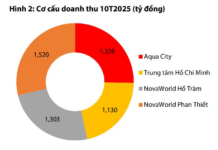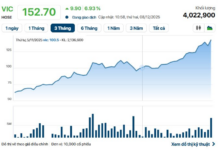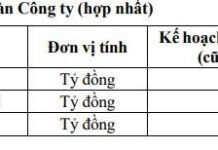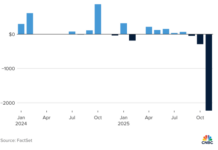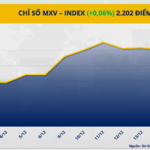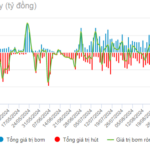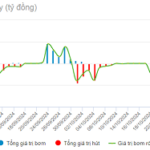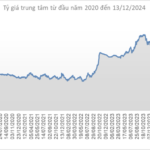After rising approximately 4.6% in 2024, marking the third consecutive year of increases, contrary to the previous three years of declines, USD rates at banks showed signs of decline in the first half of January this year. Specifically, Vietcombank’s buying price for USD decreased by 0.2% compared to the end of 2024, while the selling price increased slightly by 0.05%, pushing the buy-sell spread up from 300 VND to 360 VND as of now. In the free market, USD also decreased slightly by 0.2% during the same period.
Despite a favorable start to the new year, analysts believe that the USD/VND exchange rate remains one of the major unpredictable challenges in 2025. Forecasts from organizations suggest that the domestic foreign exchange market will continue to face pressure and that the exchange rate will continue its fourth consecutive year of increases. For instance, in a recent analysis report, MBS Securities Company opined that exchange rate risk remains a significant concern in 2025. Most analysts agree that the strengthening of the US dollar in the international market is the primary factor exerting pressure on the depreciation of the Vietnamese dong.
USD Regains Strength
After hitting a low of around 100 points in late September, the USD Index has recovered since then, rising more than 9% in the last three and a half months. Currently, the index has reached 109 points, the highest since 2022. The US dollar is expected to strengthen further in 2025, as technical indicators also signal the re-establishment of a long-term upward trend.
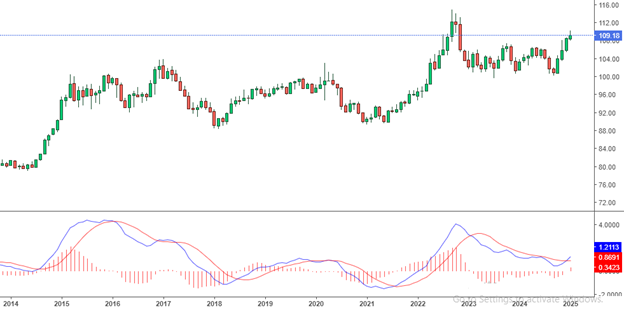
The MACD indicator on the monthly chart suggests that the USD Index has established an upward trend
|
The re-election of Mr. Donald Trump as president is considered the main driver of the US dollar’s strength, with expectations of a more robust US economy in the next phase. With a focus on loosening fiscal policy, the potential imposition of new tariff barriers, and tighter immigration policies by the Trump 2.0 administration, there could be a boost to economic growth but also a potential return of inflationary pressures.
Meanwhile, with Mr. Trump’s goal of bringing jobs back to the US and attracting multinational corporations to set up production facilities in the country, international investment inflows into the US will also increase the demand for USD holdings. Recent employment reports indicate a tight labor market, with new jobs created far exceeding previous forecasts.
Additionally, with the yield on US government bonds now reaching 4.6%, significantly higher than interest rates in other markets, many investors are willing to adjust their investment portfolios to include higher-yielding assets, particularly as the US dollar is also considered a safe-haven currency amid geopolitical tensions and the risk of military conflicts in multiple regions.
On the trade front, there are indications that Mr. Trump’s economic advisors are considering a plan to increase tariffs gradually, with monthly increases ranging from 2% to 5%, instead of abrupt hikes as previously proposed. This approach aims to enhance negotiating power while avoiding economic shocks in an inflationary environment.
In fact, due to concerns about high inflation under Mr. Trump’s policy directions, the US Federal Reserve (Fed) has recently signaled a slower pace of policy easing ahead. Specifically, Fed officials are expected to cut interest rates only twice in 2025, as the economy remains on a solid growth path and inflation has not yet reached its target, with the consumer price index (CPI) for November at 2.7%. Meanwhile, the US economy continues to demonstrate resilience, with a 3.1% GDP growth in the third quarter driven by strong consumer spending.
Will Foreign Currency Supply Be Affected in 2025?
In 2024, Vietnam’s total import and export turnover of goods reached 786 billion USD, a 15.4% increase compared to 2023, with a trade surplus of 24.77 billion USD for the second consecutive year. In terms of attracting foreign investment, direct investment disbursement reached 25.35 billion USD, a 9.4% increase from the previous year, while indirect investment recorded 4.54 billion USD.
Additionally, remittances to Vietnam in 2024 were estimated at 16 billion USD. Thus, these three activities alone generated nearly 70.7 billion USD in foreign currency inflows. This does not include revenue from the tourism sector, which saw nearly 17.6 million international visitors to Vietnam in 2024, a 39.5% increase from the previous year. On the other hand, the trade in services recorded a deficit of 12.34 billion USD in 2024.
|
These three activities alone, namely trade, investment, and remittances, brought in nearly 70.7 billion USD in foreign currency. This does not even include revenue from the tourism sector, which saw a significant increase in international arrivals to Vietnam in 2024, totaling nearly 17.6 million, representing a 39.5% surge from the previous year. Conversely, the trade in services recorded a deficit of 12.34 billion USD for the same period. |
There are concerns about whether this performance can be replicated in 2025. Firstly, the trade surplus may narrow due to the risk of Vietnam being subjected to tariffs as one of the countries with the largest trade surplus with the US, which has been steadily increasing in recent years. If faced with tariff barriers, Vietnam’s exports could be impacted.
Consequently, Vietnam may need to increase its imports from the US to avoid tariffs. In fact, many Vietnamese businesses have recently explored the possibility of importing more American products. As analysts have pointed out, in any scenario, the surplus of Vietnamese exports to the US may not continue to grow as robustly as in previous years. Additionally, Vietnam also faces the challenge of imports from China if the US imposes further tariffs on Chinese goods.
Meanwhile, the risk of trade tariffs could also affect Vietnam’s ability to attract foreign investment in the coming period. In the past six years, Vietnam has benefited from the restructuring of supply chains by multinational corporations, who have shifted their production bases from China to Vietnam to mitigate risks arising from the US-China trade war. Recent data shows a 3% decrease in registered foreign investment into Vietnam in 2024 compared to the previous year, a signal worth noting.
Finally, with foreign exchange reserves significantly depleted in the past year, the room for intervention to support the exchange rate has diminished. According to some organizations’ recently published data, Vietnam sold approximately 9.4 billion USD in 2024, reducing its reserves to 80 billion USD, equivalent to only 10 weeks of imports, lower than the 13.2 weeks recorded at the end of 2023. According to the IMF, a country is considered to have adequate foreign exchange reserves when it can cover 12 to 14 weeks of imports.
– 08:28 16/01/2025
The Central Bank’s Net Withdrawal Exceeds VND 27 Trillion
The State Bank of Vietnam (SBV) has resumed net withdrawal on the open market operation (OMO) channel, marking a shift from the previous month’s net injection to support systemic liquidity due to seasonal factors.








